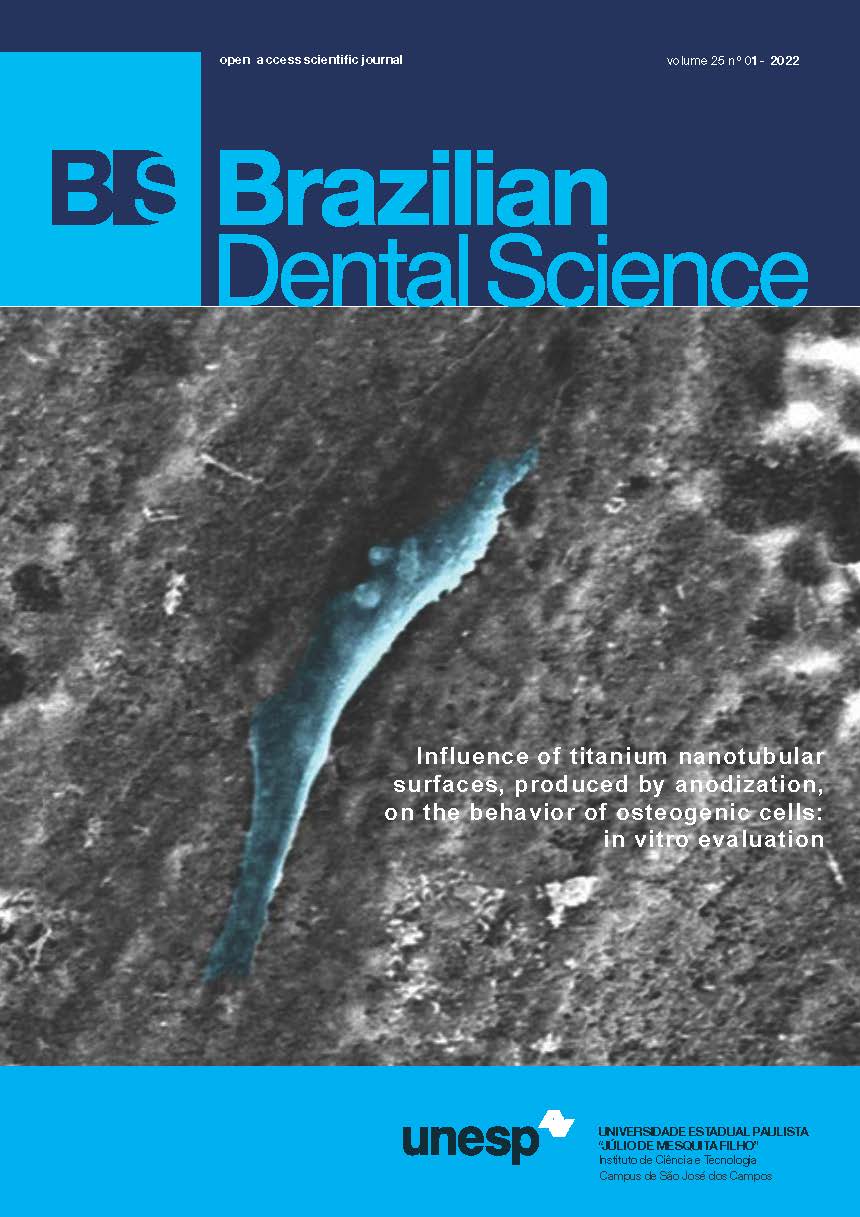Force decay and discoloration of thermoplastic and thermoset orthodontic elastomeric chains
DOI:
https://doi.org/10.4322/bds.2022.e2612Abstract
Objective: Elastomeric chains are commonly used to apply force for orthodontic dental movements. However,
force decay and discoloration are two important weak points of these materials. The present study intended to
compare the force decay and color stability of different types of elastomeric chains. Material and Methods: This
in vitro study evaluated 6 groups of elastomeric chains, including thermoplastic (TP) and thermoset (TS) chains
made by the companies American Orthodontics (AO), Ormco (OR), and G&H Orthodontics (GH). The elastomeric
chain forces were measured at the baseline, following 1 hour, 1 day, 1, 2, 3, 4, 5, and 6 weeks of stretching.
The elongation required for the chains to exert a force of 250 g was calculated. E of each group was calculated
by a spectrophotometer following immersion in black tea solution for 6 days. Data were analyzed using the
SPSS 22 software and the statistical methods of repeated measures analysis of variance and two-way analysis of
variance (P<0.05). Results: The force decay of the TS chains were significantly lower than the TP chains in the
6-week study duration (P<0.05), and the lowest and highest force decay was observed in the products by AO
and GH, respectively. The highest force degradation occurred during the first week in all groups. The elongation
rate needed for the TS chains was significantly higher than the TP chains (P<0.05), and the highest elongation
rate was observed in the products by OR. TS chains showed significantly higher color stability than TP chains,
and products by OR and GH had better color stability than the products by AO. Conclusion: The present study
showed that TS chains were superior to TP chains in force decay and color stability in all the brands studied.
KEYWORDS
Color; Elastomeric; Force decay; Thermoplastic; Thermoset.
Downloads
Downloads
Published
Versions
- 2022-03-29 (2)
- 2022-02-04 (1)
How to Cite
Issue
Section
License
Brazilian Dental Science uses the Creative Commons (CC-BY 4.0) license, thus preserving the integrity of articles in an open access environment. The journal allows the author to retain publishing rights without restrictions.
=================




























